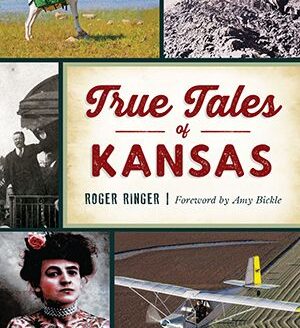Grassroots journalism still has an audience
People in Kansas, and across this country, depend on strong community journalism to keep them informed and connected to one another. In spite of all the inroads with social media, many of the folks who live in rural communities across Kansas still rely on home-town newspapers like the Hoxie Sentinel where I grew up.
Just like the local grocery, school or courthouse, inhabitants of rural Kansas consider their community newspaper vital. Some even believe if they lose their paper, they could lose their entire town.
While in northwestern Kansas a couple weeks ago a long-time cattleman told me he’d be lost without his weekly paper. He told me, “Just like my livestock, we need to nurture this process. Folks gotta’ support their local paper just like they have to support other businesses up and down Main Street.”
Community newspapers report the “real news.” What’s really happening in a small town or village. You remember, the local news—the births, deaths, weddings, city council meetings, high school events, sporting events—they cover it all.
As a youngster growing up in Sheridan County I could catch up on all the events going on in all the small villages in my county including Seguin, Selden, Studley and Tasco. While these communities were too small to publish their own newspaper, stringers (usually a volunteer with a flair for writing within the community) submitted this local news to the Sentinel each week.
Each community column provided the latest on vital dinner parties, who visited whom and the weekly rainfall reports. Our little town news could be found under the heading “Seguin Items.”
Vona Lee Dempewolf penned this weekly update and this crack reporter kept everyone in the know. Many of her sources went unnamed and some of this news was gathered by listening in on the party line. That’s when six or seven families shared the same telephone line. If two people were having a conversation and a third party lifted the phone receiver, he/she could listen in on the conversation. Now that’s another story.
But back to local newspapers that remain the voice of rural communities. Without them, that independent voice is gone. In the case of political reporting, rural Kansas newspapers reveal the person running in a campaign.
Readers come to know who that person really is. Not just what he or she says they are.
Today’s volunteer organizations should make it a point to visit with the local newspapers in their region. Cultivating first-name relationships with reporters, editors and publishers is vital to getting the word out on what your organization is doing. It’s all part of the process of community. Letting people know what you’re all about.
The local media is vital for businessmen, farmers, ranchers anyone who is engaged in business. This important communications link is important for everyone in and around each community.
While much of today’s big city and national media have a less than stellar reputation, it’s different in small towns. In small towns people know their reporters and editors. One of the best ways for anyone in public life to connect with constituents is through community newspapers.
Coverage is different too. Community papers report the facts. Sometimes the large metropolitan papers miss the point and end up talking about themselves. They make the news—they become the news.
Today, avenues for delivering news continue to expand. Social media continues to explode, especially among the younger crowd. Still, approximately 150 million people in the United States read a newspaper—in print or on line—on a weekly basis. More than 45 million read a paper daily.
Although there is no doubt print newspaper readership is slowly declining, reports about the pending death of the newspaper industry are exaggerated. Given the fragmentation of media choices, printed newspapers are holding onto their audiences. And nowhere is this truer than in rural states like Kansas.
John Schlageck is a leading commentator on agriculture and rural Kansas. Born and raised on a diversified farm in northwestern Kansas, his writing reflects a lifetime of experience, knowledge and passion.


